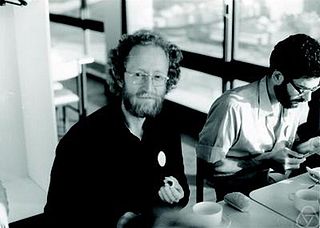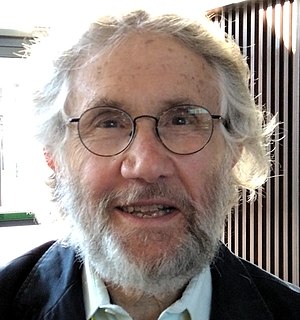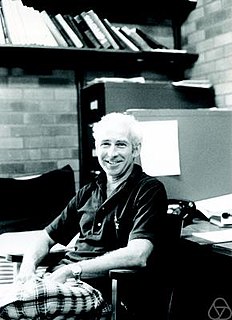
Stephen Smale is an American mathematician, known for his research in topology, dynamical systems and mathematical economics. He was awarded the Fields Medal in 1966 and spent more than three decades on the mathematics faculty of the University of California, Berkeley, where he currently is Professor Emeritus, with research interests in algorithms, numerical analysis and global analysis.

Gábor Szegő was a Hungarian-American mathematician. He was one of the foremost mathematical analysts of his generation and made fundamental contributions to the theory of orthogonal polynomials and Toeplitz matrices building on the work of his contemporary Otto Toeplitz.

Harold Calvin Marston Morse was an American mathematician best known for his work on the calculus of variations in the large, a subject where he introduced the technique of differential topology now known as Morse theory. The Morse–Palais lemma, one of the key results in Morse theory, is named after him, as is the Thue–Morse sequence, an infinite binary sequence with many applications. In 1933 he was awarded the Bôcher Memorial Prize for his work in mathematical analysis.

Szolem Mandelbrojt was a Polish-French mathematician who specialized in mathematical analysis. He was a Professor at the Collège de France from 1938 to 1972, where he held the Chair of Analytical Mechanics and Celestial Mechanics.

Nathan Jacobson was an American mathematician.

Joseph Leonard Walsh was an American mathematician who worked mainly in the field of analysis. The Walsh function and the Walsh–Hadamard code are named after him. The Grace–Walsh–Szegő coincidence theorem is important in the study of the location of the zeros of multivariate polynomials.

Harry Kesten was an American mathematician best known for his work in probability, most notably on random walks on groups and graphs, random matrices, branching processes, and percolation theory.

Oscar Eramus Lanford III was an American mathematician working on mathematical physics and dynamical systems theory.

R. A. Brualdi is a professor emeritus of combinatorial mathematics at the University of Wisconsin–Madison.
Israel Michael Sigal is a Canadian mathematician specializing in mathematical physics. He is a professor at the University of Toronto Department of Mathematics.

Edward James McShane was an American mathematician noted for his advancements of the calculus of variations, integration theory, stochastic calculus, and exterior ballistics. His name is associated with the McShane–Whitney extension theorem and McShane integral. McShane was professor of mathematics at the University of Virginia, president of the American Mathematical Society, president of the Mathematical Association of America, a member of the National Science Board and a member of the National Academy of Sciences.
Henry P. McKean, Jr. is an American mathematician at the Courant Institute in New York University. He works in various areas of analysis. He obtained his PhD in 1955 from Princeton University under William Feller.

Irwin Kra is an American mathematician, who works on the function theory in complex analysis.
James Dugundji was an American mathematician, a professor of mathematics at the University of Southern California.
Gilbert Agnew Hunt, Jr. was an American mathematician and amateur tennis player active in the 1930s and 1940s.
Benjamin Abram Bernstein was an American mathematician, specializing in mathematical logic.

Wolfgang Krieger is a German mathematician, specializing in analysis.

Robert "Bob" McCallum Blumenthal was an American mathematician, specializing in probability theory. He is known for Blumenthal's zero-one law.
George Roger Sell was an American mathematician, specializing in differential equations, dynamical systems, and applications to fluid dynamics, climate modeling, control systems, and other subjects.

Bernold Fiedler is a German mathematician, specializing in nonlinear dynamics.














